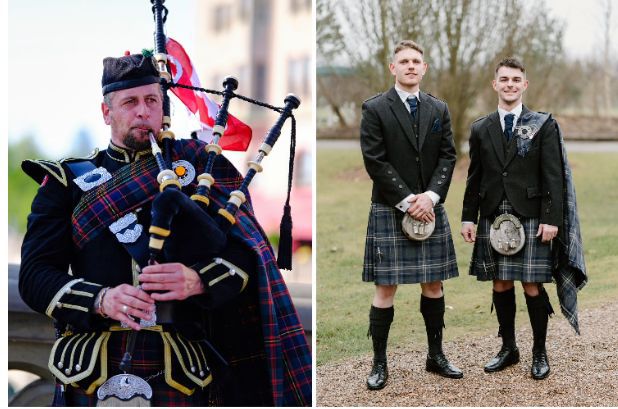The Highland bagpipes hold a special place in Scottish culture, symbolizing the nation’s deep-rooted traditions, pride, and history. Their unmistakable sound is synonymous with grand celebrations, bringing a unique energy to festivals across Scotland. This article will explore the powerful role Highland bagpipes lay in elevating the spirit of these events while uncovering the cultural depth and historical significance they carry.
The Highland Bagpipes’ Journey Through Time
The Highland bagpipes are more than just a musical instrument; they are an enduring symbol of Scottish heritage. Originating as early as the 14th century, these pipes have evolved alongside Scotland’s history, playing an integral role in everything from military processions to clan gatherings. Initially, bagpipes were used in ancient warfare and ceremonial contexts, their distinctive sound carrying over the battlefield and rallying troops. Throughout the centuries, the bagpipes adapted to various Scottish needs. In the 17th century, they became emblematic of Highland identity, particularly during the Jacobite risings. Their presence in battle and subsequent role in commemorating the fallen highlighted their significance in Scottish national consciousness. Bagpipes were played to honor heroes, inspire soldiers, and convey messages across great distances. The 19th century saw the establishment of the bagpipes as a symbol of Scottish pride, especially with the rise of the Highland Games and other cultural festivals. This period marked a renaissance in traditional Scottish culture, with the bagpipes at the forefront, representing both resistance to English domination and the rich cultural legacy of the Highlands.
How Bagpipes Strengthen Community Bonds
In Scotland, the bagpipes have traditionally been linked to the clans, representing their unique identity and pride. Each clan had its own distinct pipe tune, which was played during important events and gatherings. These tunes were more than mere music; they were a representation of clan values, legends, and history, passed down through generations. At festivals like the Highland Games and Clan Gatherings, pipers perform wearing the tartans of their respective clans. This display of clan colors and the accompanying melodies reinforce a sense of shared heritage and unity. The music of the bagpipes serves as a powerful reminder of the clan system’s significance, fostering a deep connection among members and instilling a sense of belonging. Furthermore, the practice of playing specific tunes for particular clans or events helps preserve clan traditions. It allows younger generations to learn about their heritage through music, ensuring that the cultural practices associated with their clans are kept alive. During festivals, the air is filled with a rich tapestry of sounds, each tune telling a story of its own and contributing to the collective identity of the Scottish people.
Rhythms of the Highlands – The Music That Moves Festivals
The Highland bagpipes are the beating heart of Scotland’s festivals. Whether it’s the stirring sound of a solo piper or the thunderous harmony of a pipe band, these instruments set the pace and elevate the atmosphere. The distinctive drone and melody of the bagpipes create a unique auditory experience that resonates through the hills and valleys, capturing the essence of Scottish festivals. At festivals like the Highland Games, the bagpipes serve as the rhythm section, providing a pulse that drives the event forward. Their powerful, resonant sound creates a dynamic atmosphere, energizing participants and spectators alike. The interplay between the pipes and other traditional elements, such as Highland dancing and athletic competitions, contributes to the overall festive mood. The music of the bagpipes is also integral to ceremonial events, such as the opening and closing ceremonies of large festivals. The processional tunes played by pipers mark the beginning and end of events, adding a sense of grandeur and formality. These moments are enhanced by the visual spectacle of pipers in full regalia, their music weaving through the air and leaving a lasting impression on all who attend.
Piping Through the Ages – Evolution of the Highland Sound
Although Highland bagpipes remain steeped in tradition, the music has evolved to reflect modern tastes while preserving its authenticity. At festivals, you’ll find contemporary compositions and innovative performances that blend the old and new. This adaptability allows the bagpipes to remain relevant and captivating in today’s Scottish cultural landscape. The evolution of bagpipe music can be traced through the changing styles and influences over the centuries. Early bagpipe music was heavily influenced by folk traditions, with a focus on simple, repetitive melodies. As time progressed, the repertoire expanded to include more complex arrangements, incorporating elements from classical and contemporary music. Modern bagpipers often experiment with different genres, blending traditional tunes with jazz, rock, and even electronic music. This fusion of styles has led to the emergence of new and exciting forms of bagpipe music, attracting a diverse audience and keeping the instrument relevant in today’s music scene. Festivals showcase this innovation, with performances that highlight the versatility of the bagpipes and their ability to adapt to contemporary tastes.
Where Highland Bagpipes Steal the Show
Highland bagpipes are the crown jewel of Scottish festivals. Major events like the Royal Edinburgh Military Tattoo and the Braemar Gathering feature pipers in front-and-center roles, captivating audiences with their robust, full-bodied sound. These festivals have become synonymous with the spectacle of massed pipe bands, showcasing both individual skill and collective strength. The Royal Edinburgh Military Tattoo, held annually on the Esplanade of Edinburgh Castle, is a prime example of the bagpipes’ prominence in Scottish festivals. The event features an impressive array of pipe bands from around the world, performing intricate routines and engaging in friendly competition. The Tattoo’s blend of music, precision drills, and dramatic performances creates a mesmerizing experience that highlights the grandeur of Highland bagpipe traditions. Similarly, the Braemar Gathering, one of Scotland’s most prestigious Highland Games, places a strong emphasis on piping. The event attracts top pipers from across the globe, who compete in various categories and demonstrate their skill in front of a discerning audience. The Gathering’s focus on traditional Highland culture is underscored by the prominence of bagpipes, which play a central role in the festivities.
Bagpipes as the Festival Soundtrack
Whether marking the start of a Highland Games or leading a procession at Hogmanay, the sound of the bagpipes is ever-present. Their tones, both celebratory and solemn, capture the mood of each event, adding a profound emotional layer that immerses attendees in the experience. The pipes are not just a soundtrack but a vital component of the festival itself. At festivals, the bagpipes create an atmosphere that resonates with both excitement and reverence. Their sound can shift from triumphant and energetic during competitions and parades to contemplative and solemn during memorials and commemorations. This versatility allows the bagpipes to complement a wide range of festival activities, enhancing the overall experience for attendees. The emotional impact of the bagpipes is evident in their ability to evoke a sense of nostalgia and pride. Their music often reminds people of their heritage, connecting them with their roots and fostering a deeper appreciation for Scottish culture. This emotional resonance is a key factor in the bagpipes’ role as a central element of festival soundtracks.
Highland Bagpipes and National Pride
At every Scottish festival, Highland bagpipes serve as a proud reminder of Scotland’s independence, resilience, and cultural richness. They evoke a sense of pride not only in locals but also in international visitors who attend these events to witness authentic Scottish culture firsthand. The bagpipes create a direct link between the past and present, celebrating the spirit of Scotland. The cultural significance of the bagpipes extends beyond their role in festivals. They are a symbol of Scottish identity, representing the nation’s history, values, and traditions. The music of the bagpipes is a powerful expression of Scotland’s cultural heritage, resonating with both Scots and visitors alike. Internationally, the bagpipes are recognized as a symbol of Scotland, contributing to the country’s global image and reputation. Festivals that feature Highland bagpipes attract visitors from around the world, who come to experience the unique sound and spectacle of Scottish culture. The presence of bagpipes at these events reinforces Scotland’s position as a cultural destination and a guardian of its rich heritage.
From Highland Games to Weddings
While festivals like the Highland Games are well-known for their pipe performances, bagpipes are an essential feature of many Scottish celebrations, from weddings to funerals. This versatility speaks to the deep cultural significance of the instrument. At festivals, pipers often tailor their performances to reflect the unique mood of each occasion, further demonstrating the bagpipes’ integral role in Scottish life. At weddings, the bagpipes add a touch of tradition and grandeur, marking significant moments such as the arrival of the bride and the signing of the register. The music creates a celebratory atmosphere, enhancing the emotional impact of the ceremony and providing a memorable experience for guests. Similarly, at funerals and memorial services, the bagpipes offer a solemn and respectful tribute to the deceased. The traditional tunes played by pipers evoke a sense of reverence and dignity, honoring the life of the departed and providing comfort to those in mourning. The presence of bagpipes at such events underscores their role as a versatile and meaningful element of Scottish cultural practices.

Embracing Tradition Across the Atlantic
Kilts USA brings the rich heritage of Scottish kilts to the American market, offering a wide range of traditional and contemporary styles that cater to various tastes and occasions. By providing high-quality, authentic kilts crafted from premium tartans and materials, Kilts USA ensures that enthusiasts and newcomers alike can experience the timeless elegance and cultural significance of these iconic garments. Whether for formal events, casual wear, or ceremonial purposes, Kilts USA bridges the gap between Scottish tradition and American fashion, celebrating the kilt’s unique legacy while embracing modern trends.
The Mastery of Highland Pipers
Mastering the Highland bagpipes is a labor of love, requiring years of dedication and skill. The precision needed to control the drones, chanter, and air supply is immense. At festivals, the expertise of pipers shines through, leaving audiences in awe of their craftsmanship. These performances are not just entertainment; they are a testament to the enduring passion and tradition of the art. The process of learning to play the bagpipes involves rigorous training and practice. Pipers must develop a deep understanding of the instrument’s mechanics, including the intricacies of tone production and breath control. This mastery requires a combination of technical skill, musicality, and physical endurance, as pipers must maintain a steady flow of air while producing complex melodies. In addition to individual skill, the ability to perform as part of a pipe band is crucial. Band members must coordinate their playing to achieve a unified sound, requiring precise timing and teamwork. The discipline and dedication required to achieve this level of performance are evident in the high standards set by top pipers at festivals.
Conclusion
The Highland bagpipes are not merely instruments; they embody the spirit of Scottish festivals. With their unique ability to stir emotions, honor history, and bring people together, they hold a central place in these celebrations. As festivals flourish, the resonant sound of the pipes will continue to be their soul, imbuing each gathering with the enduring pride and tradition that have shaped Scotland for generations.
